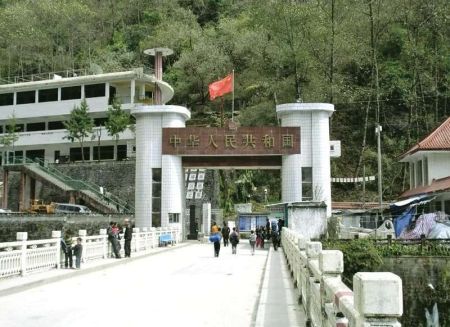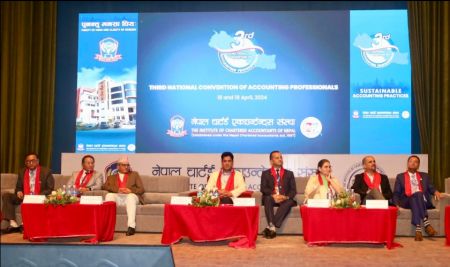--By Niranjan Phuyal
Last week, Forbes published the world’s billionaires’ list and stated that business tycoon Binod Kumar Chaudhary is only the only billionaire from Nepal. According to the magazine, Chaudhary’s stakes in Nabil Bank and CG Foods, and properties in other Asian as well as African countries contributed to his wealth. What about the other business groups in Nepal? If the real sector companies in Nepal had been listed at the secondary market, it would have created value for the investment. In such situation, more business people from Nepal could be in the billionaires’ list. One of the most important functions of the secondary market is to create price and it is value for the investors. But the question here is why most businessmen in Nepal do not want to enter the capital market.
The main function of the capital market is to channelize funds to the needy people who have entrepreneurship skills. The capital market consists of primary market and secondary market. The primary market should create a pool of funds where companies can issue different forms of securities to use as long-term sources of funds. Similarly, the secondary market is needed to provide liquidity for the investors and ultimately it also creates value for them. Liquidity is the beauty of the secondary market which is the main cause for the investors to invest in the primary market. The rules, regulations and intermediaries in this market are created to make the market more efficient and less costly. Emerging as well as developed economies show that corporations and governments rely on the capital market for long-term sources of funds with less cost than in the banking sector. But is Nepal’s capital market doing what it is supposed to do?
One of the problems seen in our capital market is the concentration on banks and financial institutions (BFIs). The prevailing Banks and Financial Institution Act (BAFIA) and the Insurance Act make it mandatory for such companies to float shares to the public. Apart from BFIs and insurance companies, only five hydropower companies and one telecommunication company have entered the market over more than past one decade. Over this period, we have seen many companies from the hotel sector and hydropower sector, large media groups, airlines, builders, private hospitals, and even few manufacturing companies start their businesses in the country. Moreover, the existing companies are also increasing the scope of their businesses. But they are not using the capital market for any source of funds. It means Nepal’s capital market is not efficient enough for the entrepreneurs and companies so that they can use capital from the market.
As a developing economy, Nepal needs a lot of capital for infrastructure development and economic growth. Due to the remittance income, there is enough BOP surplus and liquidity. Import is many folds higher than export. Lots of cars and other luxury related expenses can be seen in the economy. The main source of revenue for the government is the tax received from the import of vehicles and fuel. However, we are facing more than 12 hours of power cut a day in the dry season for the last one decade. Billions of rupees have been mopped up for the purchase of invertors and batteries. But the same amount is not collected in time to construct powerhouses. Few recent examples in hydropower projects verified that the Nepalis have enough capacity (both technical and financial) to develop medium level powerhouses. If few of the potential projects were built earlier, we might not be facing any power cut now. Only the efficient intermediary service is needed to create capital for such investment and it should be done by the capital market.
Why companies do not want to enter capital market?
As mentioned earlier, BFIs are enforced to issue at least 30 per cent shares to the general public. Due to this legal provision, during the secondary market boom of 2007-08, one of the D-class microfinance institutions issued shares worth Rs 6 million to the general public. It was oversubscribed by many folds and the total IPO cost for the company was more than Rs 5 million. There are lots of cost for issuing securities in the Nepali capital market like the SEBON registration cost, issue manager cost, publication cost, issuance cost and listing cost. This is the major cause for the companies not to consider the capital market. Secondly, in the existing system, there is no incentive for the promoters to go public after establishing companies and taking risk in the initial operation phase. Suppose, if Everest Hotel or Surya Nepal is to issue shares to the general public, then they can issue at par value or in premium up to net worth per share. But the founder or the ultimate risk taker would not be willing to issue shares unless they will get enough return in terms of premium. Rather they will search alternative sources of funds to finance their expansion or new projects.
Mostly, Nepali businesses are operated as family-owned businesses which lack corporate culture. In normal situation, they don’t want transparency and more reporting authorities. But once they enter the capital market for public participation in the capital structure, such companies should be more transparent. So, the family-owned business culture in Nepal and the lack of corporate governance in the companies also contribute to the limited participation of real sector companies in the capital market.
Some Other Problems
Apart from the above-mentioned causes, there are some other problems which are creating hindrances for the capital market to act as per its objective. The capital market is the collective work of all the participants like Nepal Stock Exchange (NEPSE) as front line regulator, dealers, market makers, issue managers, depositories, brokers, mutual funds and the Securities Board of Nepal (SEBON) as the apex regulator. All the participants must be efficient to make the capital market effective. The role of the securities board and exchange is more important. However, in Nepal both institutions are not equipped with proper and expert manpower and they are also under-staffed. NEPSE is still running under government ownership. The extreme inefficiency can be seen in the operation of depository as all the infrastructures are in place since last few years, but still it is not in operation. If NEPSE was privatized or if CDS and Clearing Ltd was operated by the private sector, it could have been providing services to the investors by now. Still we do not have market makers and dealers in the market. The number of mutual funds is far less than required.
Nowadays, capital market activities are so technology oriented that investors can do everything from the click of the mouse. But we can see queues to fill up the forms of IPOs. When a hydropower company issued its IPO recently, investors were in the collection centers till 10:00 pm to submit their forms. But this is the same country where near about a million people submit electronic DV (US Diversity Visa) forms yearly. Why are we not able to provide online service to those who want to buy IPOs? The problem is more serious in the secondary market. The problem of depository and less efficient trading system of NEPSE are the causes behind the failure to tap all potential investment in the market. The way of service delivered by brokers seems to be very traditional. It takes months for ownership transformation. The commodities market is not regulated and there are not enough instruments in the capital market for portfolio efficiency. These are the basic facilities that should be provided to the investors for efficient funds flow.
It is already late to start for the change. But still we can do a lot. Few policy level changes that can be done by the ministry, SEBON and NEPSE can bring remarkable development in the capital market. Some kind of new infrastructure and technology changes will not only boost the investors’ confidence, but also attract more investors to the market. This will help to form low cost capital for the economic development of the country. Hopefully, in the coming days, the entrepreneurs will find Nepali capital market as an easy source of funds to finance their projects.
The author is asst manager at NEPSE and a visiting faculty at KUSOM.





















